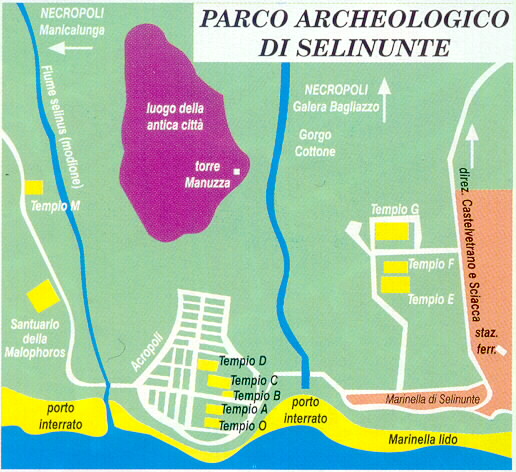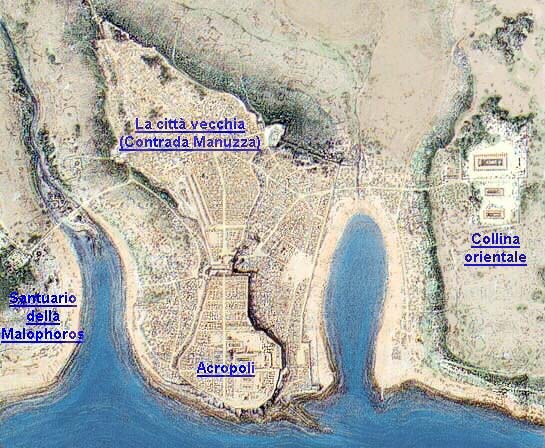|
Selinus was founded, towards the middle of the 7
century B.C., by settlers from Megara Hyblaea
(according TkuKydides VI 4,2 in 628; according to Diodorus XIII 59,4
in 651). Obviously in peacefull agreement with the neighbuoring
Punians, the new colonist occupied the large areas of the arable
land and settled at the key points of the future urban area. In a
first phase, they sougth the company of a Sikan village who lived in
the northem extremity of the Manuzza Hill. In the first quarter of
the 5 century, the fluorishing growth of the settlements
necessitated a definition of the area, in form of the division of
the land and the lay-out of streets, taking in to consideration the
topografical characteristic of the hill. Long extended plots of
32.80 metres (equal 100 Doric feet) which werw measured along the
streets axes were connected by wider streets which ran at rigth
angles to the first mentioned. 
These plots with the passing of time,
werw occuped by houses. In the 5 century the houses, in dimensions
and building techniques, presented with large slabs of stone. The
agorÓ, the location of public administration, cannot be clearly
identified today. There are reason to believe that it was situated
in the central area, between the two large residential areas. The
sanctuaries occupy special areas in the south, east and west. The
temples themselves, in particular the group of temples in the east
hill were laid out according laid out according to schemes of the
order which follow those of the city plan. The temples, especially
the perpteral temples from the middle of the 6 century, are the most
significant evidence of the wealth of the city. In the year 409 B.C.,
the fluorshing development of the city was brougth to a halt by
unexpected attack of the Cartaginians.
In 408 B.C., the city was again taken by the Syracusan Hermocrates
and partially walled with the fortifications that can be seen today.
From that time, the southern hill of the old city served mainly as a
fortified post. After various changes in the occupation, once by the
Syracusans once by the Cartaginians the city remained in Punic hands
from the second half of the 4 century. If enyoyed modest prosperity
up until the years 250 B.C. where the remaining population was
resettled in Lilibaeum (Marsala) before the Roman invasion. It was
only in the Byzantine period that settlers returned. Then the Arabas
took over the place. It was again forfied, as can be proved by the
fort built on the top of the temple A and O. The last traces of
settlement can be made out belong to the times of the swabian rule
of the 13 century. 
|